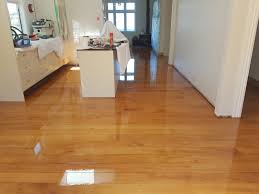Timber floors are an elegant addition to any home or commercial space. However, after years of wear and tear, even the most durable timber floors can start to look dull and lifeless. This is where timber floor sanding and polishing come in. In this guide, we’ll cover everything you need to know about timber floor sanding and polishing, including the benefits, the process, and how to maintain your timber floors.
Benefits of Timber Floor Sanding and Polishing
Timber floor sanding and polishing in Beaumont Hills offer numerous benefits, including the restoration of your floor’s natural beauty and durability. Some other benefits of timber floor sanding and polishing include:
Improved Appearance: Timber floor sanding and polishing help to remove surface scratches, stains, and dullness from your floor, giving it a new lease of life. It enhances the natural grain and colour of your timber floor, making it look like new.
Increased Durability: Timber floor sanding and polishing can increase the durability of your timber floor by removing surface damage and preventing further wear and tear. A polished floor is more resistant to stains, scratches, and general wear and tear.
Improved Indoor Air Quality: Polishing your timber floors can improve air quality by removing dirt and dust that can get trapped in the surface scratches of the timber floor. It also improves the overall hygiene and cleanliness of your home or commercial space.
The Process of Timber Floor Sanding and Polishing
The process of timber floor sanding and polishing involves several steps that include:
Sanding: The first step entails sanding the floor with an industrial-grade sander to remove any surface scratches, stains, or coatings.
Filling: After sanding, it’s essential to fill any gaps or cracks in the floorboards with a wood filler that matches the colour of the timber floor. This step ensures a smooth and even surface.
Sanding & Polishing: After filling the gaps, the floor is sanded again with finer grit sandpaper to remove any remaining marks or scratches. Finally, a timber floor polish is applied to the floor, which seals and protects the timber while enhancing its natural beauty.
Drying: After polishing, it’s essential to allow the polish to dry completely before walking on it. This process usually takes 24 to 48 hours.
Maintaining Your Timber Floors
Maintenance is crucial to keep your timber floors looking their best, and it includes the following:
Regular Cleaning: Regularly cleaning your floor helps to remove dirt and dust that can scratch and dull the surface. Avoid using harsh chemicals or abrasive cleaning products that can damage the polish.
Area Rugs: Place area rugs in high-traffic areas, especially the entrance, to trap dirt and debris before it gets to the floor.
Avoid Moisture: Exposure to water or moisture can damage and warp your timber floor. Clean up spills immediately.
Professional Cleaning: Have your timber floors professionally cleaned and polished every 3-5 years to maintain their lustre.
Conclusion
Timber floor sanding and polishing are valuable steps for maintaining the beauty and durability of your timber floors. It not only restores the natural beauty of your floors, but it also increases their longevity. Make sure to hire a professional upholstery cleaning in Canterbury to ensure that the job is done correctly and professionally. With proper maintenance, your timber floors will remain a timeless classic that adds elegance and warmth to your home or commercial space.

